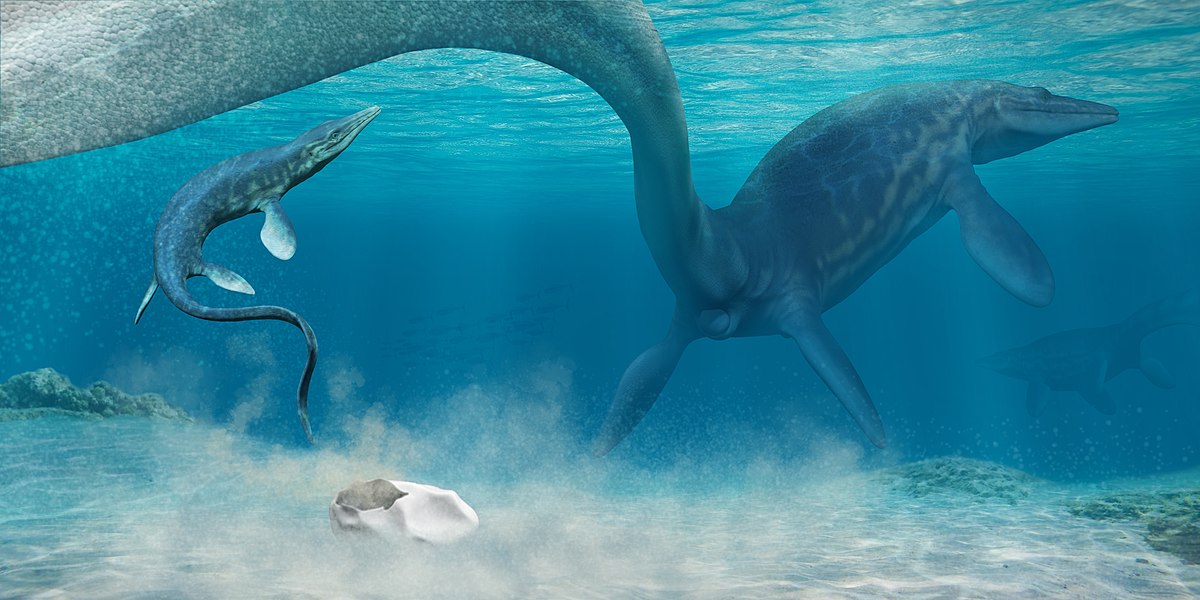Summary of Oldest Mosasaur Fossil In North America Found:
Researchers have discovered a 94-million-year-old Mosasaur fossil in Southern Utah, the oldest found in Northern America. The fossil, named “Sarabosaurus dahlia,” belonged to a marine reptile that lived during the Cretaceous period. Mosasaurs were known for their long tails and paddle-like appendages, and they evolved into large marine predators. The discovery of this well-preserved specimen provides valuable insights into the evolution and antiquity of these ancient reptiles. The fragility and scarcity of the fossils make them essential for scientific study. The discovery was made by a dedicated volunteer over a decade ago, and a joint team worked to recover nearly 50% of the specimen.
– Researchers have discovered the oldest Mosasaur fossil in North America, a marine reptile that lived during the Cretaceous period.
– The fossil, named “Sarabosaurus dahlia gen. et sp. nov.,” was found in Southern Utah and is believed to be around 94 million years old.
– Mosasaurs were apex predators during their time, with long tails and paddle-like appendages for hunting.
– The discovery of this well-preserved specimen provides valuable insights into the evolution of these ancient marine reptiles.
Unraveling the Mysteries of the Oldest Mosasaur Fossil in North America
In a groundbreaking discovery, researchers have unearthed the oldest Mosasaur fossil in North America. This ancient marine reptile, known as the “Sarabosaurus dahlia gen. et sp. nov.,” provides a glimpse into the fascinating world during the Cretaceous period. Let’s dive into the unique and captivating aspects of this incredible find.
The Rise of the Mosasaurs:
Mosasaurs, a group of marine reptiles, once dominated the seas approximately 145 to 66 million years ago. These apex predators shared their existence with the mighty dinosaurs, making them intriguing subjects for study. With their streamlined bodies, long tails, and paddle-like appendages, Mosasaurs were well adapted for hunting their prey, showcasing a perfect blend of agility and power.
Introducing the Sarabosaurus dahlia:
The newly discovered Sarabosaurus dahlia fossil was found in Southern Utah, making it the oldest Mosasaur fossil ever unearthed in North America. This remarkable find is around 94 million years old, shedding light on when these marine reptiles were still in the early stages of evolutionary development.
A Rare and Fragile Treasure:
Dr. Barry Albright, a team member that discovered the fossil, explains that Mosasaur fossils are scarce and difficult to locate. The fragile nature of these fossils adds to their scarcity, making them highly valuable for scientific study. With this in mind, the unearthing of the Sarabosaurus dahlia fossil is genuinely significant, as it provides scientists with a wealth of informative data.
Evolution and Adaptation:
According to research by the University of North Florida, Mosasaurs evolved from land-dwelling ancestors resembling the modern-day Komodo Dragon. Over time, their bodies transformed into streamlined forms, their limbs developed into paddle-like fins, and their tails became powerful propellers, allowing them to easily navigate the ancient oceans. The discovery of the Sarabosaurus dahlia fossil further enhances our understanding of this evolutionary process.
The Journey to Discovery:
The story of the Sarabosaurus dahlia fossil began over a decade ago when Scott Richardson, a dedicated volunteer, embarked on a quest to find fossilized remains of marine creatures from the late Cretaceous period. In March 2012, Richardson stumbled upon numerous skull fragments and vertebrae scattered across a shale slope in Southern Utah. These fragments were later identified as belonging to an early Mosasaur. Over two field seasons, a joint team led by Richardson, alongside members from the Bureau of Land Management and the National Park Service, worked tirelessly to recover nearly 50% of the specimen, unraveling its identity.
The Significance of the Discovery:
Dr. Alan Titus, a paleontologist, emphasizes the rarity of finding Mosasaur fossils in rocks older than 90 million years. The discovery of the Sarabosaurus dahlia fossil, which contains a wealth of informative data, is therefore paramount. This well-preserved specimen will undoubtedly contribute to our knowledge of these ancient marine reptiles and their place in the Earth’s history.
Conclusion:
The discovery of the oldest Mosasaur fossil in North America, the Sarabosaurus dahlia, is a testament to the wonders of paleontology and the dedication of researchers to unraveling Earth’s ancient past. Through the careful study of this well-preserved specimen, we gain invaluable insights into the evolution and antiquity of Mosasaurs, shedding light on the rich diversity of life that once thrived in the ancient oceans. May this discovery inspire future explorations and ignite a passion for understanding the captivating world of prehistoric creatures.

